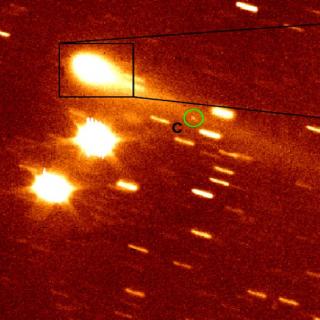Bibcode
Arakawa, M.; Saiki, T.; Wada, K.; Ogawa, K.; Kadono, T.; Shirai, K.; Sawada, H.; Ishibashi, K.; Honda, R.; Sakatani, N.; Iijima, Y.; Okamoto, C.; Yano, H.; Takagi, Y.; Hayakawa, M.; Michel, P.; Jutzi, M.; Shimaki, Y.; Kimura, S.; Mimasu, Y.; Toda, T.; Imamura, H.; Nakazawa, S.; Hayakawa, H.; Sugita, S.; Morota, T.; Kameda, S.; Tatsumi, E.; Cho, Y.; Yoshioka, K.; Yokota, Y.; Matsuoka, M.; Yamada, M.; Kouyama, T.; Honda, C.; Tsuda, Y.; Watanabe, S.; Yoshikawa, M.; Tanaka, S.; Terui, F.; Kikuchi, S.; Yamaguchi, T.; Ogawa, N.; Ono, G.; Yoshikawa, K.; Takahashi, T.; Takei, Y.; Fujii, A.; Takeuchi, H.; Yamamoto, Y.; Okada, T.; Hirose, C.; Hosoda, S.; Mori, O.; Shimada, T.; Soldini, S.; Tsukizaki, R.; Iwata, T.; Ozaki, M.; Abe, M.; Namiki, N.; Kitazato, K.; Tachibana, S.; Ikeda, H.; Hirata, N.; Hirata, N.; Noguchi, R.; Miura, A.
Referencia bibliográfica
Science
Fecha de publicación:
4
2020
Revista
Número de citas
234
Número de citas referidas
229
Descripción
The Hayabusa2 spacecraft investigated the small asteroid Ryugu, which has a rubble-pile structure. We describe an impact experiment on Ryugu using Hayabusa2’s Small Carry-on Impactor. The impact produced an artificial crater with a diameter >10 meters, which has a semicircular shape, an elevated rim, and a central pit. Images of the impact and resulting ejecta were recorded by the Deployable CAMera 3 for >8 minutes, showing the growth of an ejecta curtain (the outer edge of the ejecta) and deposition of ejecta onto the surface. The ejecta curtain was asymmetric and heterogeneous and it never fully detached from the surface. The crater formed in the gravity-dominated regime; in other words, crater growth was limited by gravity not surface strength. We discuss implications for Ryugu’s surface age.
Proyectos relacionados

Pequeños Cuerpos del Sistema Solar
Este Proyecto estudia las propiedades físicas y composicionales de los llamados pequeños cuerpos del Sistema Solar, que incluyen asteroides, objetos helados y cometas. Entre los grupos de mayor interés destacan los objetos trans-neptunianos (TNOs), incluyendo los objetos más lejanos detectados hasta la fecha (Extreme-TNOs o ETNOs); los cometas, y
Julia de
León Cruz